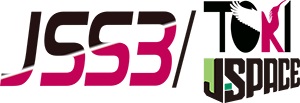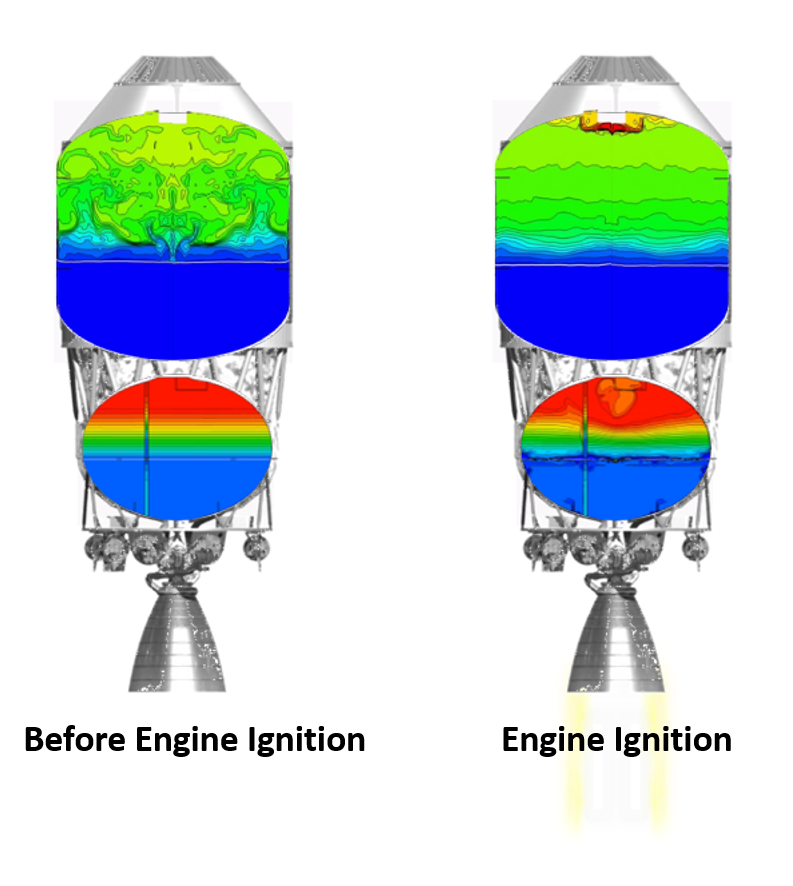Numerical Simulation of Propellant Management for Rockets and Spacecrafts
JAXA Supercomputer System Annual Report April 2017-March 2018
Report Number: R17EG3215
Subject Category: Research and Development
- Responsible Representative: Yutaka Umemura, Researchand Development Directorate, Research Unit III
- Contact Information: Yutaka UMEMURA umemura.yutaka@jaxa.jp
- Members: Tetsuji Ogawa, Hideyo Negishi, Yoichi Ohnishi, Yu Daimon, Osamu Fukasawa, Takuya Iimura, Keiichiro Fujimoto, Masashi Toyama, Akimitsu Terunuma
Abstract
In order to improve the payload capacity of spacecraft, it is necessary to optimally design the propellant amount on board under the uncertainty of cryogenic propellant evaporation and low gravity environment. This project has been conducting numerical simulation development for the cryogenic propellant thermal flow analysis. By understanding the internal heat flow of the propellant tank and the feed line, it is linked to the change of propellant system design and operation.
Reference URL
N/A
Reasons for using JSS2
In the thermal flow analysis inside upper stage propellant tanks, the calculation lattice is as small as several millimeters in order to consider a evaporation on the liquid surface, and it is necessary to solve operation time of 500 seconds or more. The calculation load of this tank thermal flow analysis is so large that it requires the supercomputer's performance.
Achievements of the Year
The flow in the upper propellant tank during flight operation is changing every moment due to the difference in fluid density and rocket's acceleration.
From improving the evaluation of the heat transferred to the liquid surface by implementing a physical model that takes into consideration the effects of evaporation and component mixing such as helium, the upper stage of the H-IIA rocket Simulation from engine start to inertial flight after engine stop was realized.
Publications
■ Non peer-reviewed papers
1) Liquid Nitrogen Chill-down Process Prediction by Direct Interface Tracking Approach, Yutaka UMEMURA, Takehiro HIMENO, Osamu KAWANAMI, Wataru SARAE, Kiyoshi KINEFUCHI, Hiroaki KOBAYASHI, Osamu FUKASAWA, Propulsion & Energy 2017
2)Visualization for Liquid Behavior under Low Acceleration Attitude Control, Yutaka UMEMURA, Takehiro HIMENO, Daichi HABA, Osamu FUKASAWA, Mayu MATSUMOTO, Yasuhiro SAITO
3)Study on Simulation Technology for Improving the Cryogenic Propellant Management in the Space Transfer Vehicle, Yutaka UMEMURA, Takehiro HIMENO, Daichi HABA, Osamu KAWANAMI, Osamu FUKASAWA
Usage of JSS2
Computational Information
- Process Parallelization Methods: MPI
- Thread Parallelization Methods: OpenMP
- Number of Processes: 3 - 4
- Elapsed Time per Case: 104.00 hours
Resources Used
Fraction of Usage in Total Resources*1(%): 0.92
Details
Please refer to System Configuration of JSS2 for the system configuration and major specifications of JSS2.
| System Name | Amount of Core Time(core x hours) | Fraction of Usage*2(%) |
|---|---|---|
| SORA-MA | 4,481,020.35 | 0.59 |
| SORA-PP | 537,755.45 | 6.73 |
| SORA-LM | 81.10 | 0.04 |
| SORA-TPP | 8,021.22 | 0.89 |
| File System Name | Storage Assigned(GiB) | Fraction of Usage*2(%) |
|---|---|---|
| /home | 646.24 | 0.45 |
| /data | 22,964.06 | 0.42 |
| /ltmp | 15,688.24 | 1.18 |
| Archiver Name | Storage Used(TiB) | Fraction of Usage*2(%) |
|---|---|---|
| J-SPACE | 0.24 | 0.01 |
*1: Fraction of Usage in Total Resources: Weighted average of three resource types (Computing, File System, and Archiver).
*2: Fraction of Usage:Percentage of usage relative to each resource used in one year.
JAXA Supercomputer System Annual Report April 2017-March 2018



